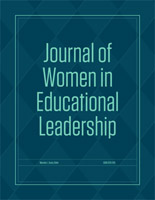Educational Administration, Department of

Journal of Women in Educational Leadership
Date of this Version
7-2007
Document Type
Article
Citation
Journal of Women in Educational Leadership, Vol. 5. No. 3. July 2007 ISSN: 1541-6224
Abstract
This study looks al female relational aggression in an effort [0 illll~trate factors involved in sclecting appropriate responses for the situation. This ethnographic case study analyzes a principal's interview, personal journal, and artifact file to describe the situations and reactions present in a severe case offemale relational aggression. Qualitative analysis refined data into three categories of responses to relational aggression: (I) fighting or struggling to resolve issues, (2) hiding or avoiding negative situations. and en running or leaving the situation. Elements that pushed the case study toward career burnout are explored, as are clements that may have prevented burnout.
Purpose of the Study
Nothing has more potential to subdue women's role in leadership than the oft misunderstood relations among women themselves. Indeed. it is not the artificial barrier of the "glass cei ling" that prevents and discourages women leaders as much as the particular expression of gender-bound aggression within the ranks of women. Understanding the complex and fluctuating roles played by women, especially in leadership capacities, helps us to analyze paJticular situations and determine how to measure our response to each, maintain our personal rene\val, and avoid disharmony and burnout.
Statement of the Problem
This case study is designed to determine which elements involved in an episode of female relational aggression fuel career burnout.


Comments
Copyright © 2007 Pro>Active Publications. Used by permission.